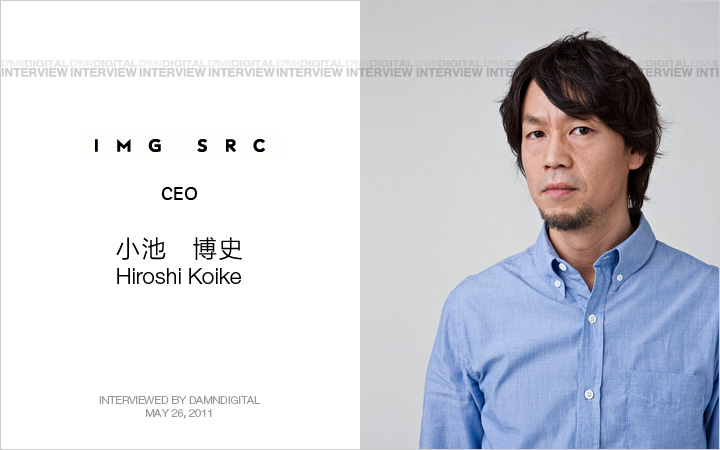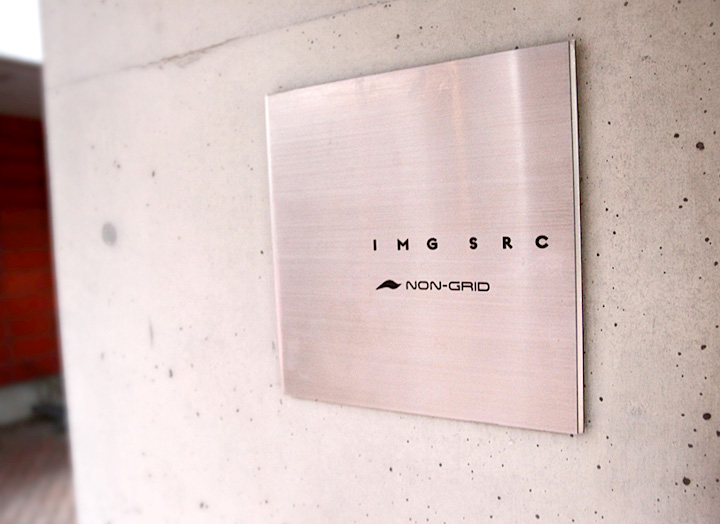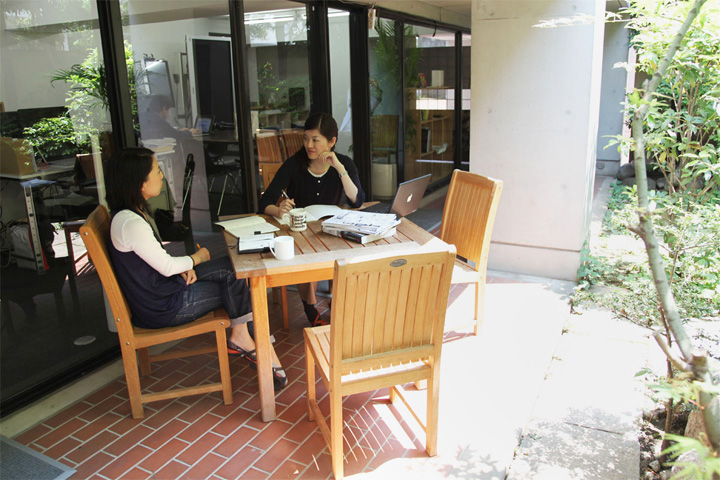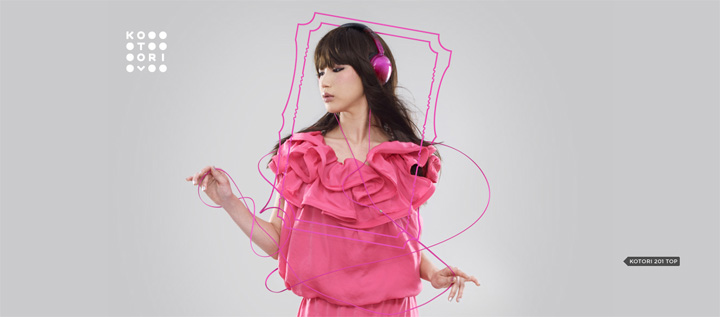
誠如上次workshop的最后所預(yù)告的(沒看過的童鞋點(diǎn)這里),這次帶來互動中國對IMG SRC CEO小池博史(Hiroshi Koike)的專訪全文。小池先生雖然是在百忙之中抽出時(shí)間接受采訪,但是回答相當(dāng)之誠懇,教益良多。
采訪/編輯: Wayne Tai(轉(zhuǎn)載請注明稿件來源自數(shù)英網(wǎng))
IMG SRC成立于1998年,是一間致力于網(wǎng)站制作、視覺設(shè)計(jì)以及交互式應(yīng)用設(shè)計(jì)的日本廣告公司,其獨(dú)特的創(chuàng)意與強(qiáng)大的執(zhí)行力聞名與業(yè)界,作品斬獲各類國際廣告獎項(xiàng)無數(shù),其中以2009年為uniqlo所制作的“Lucky Switch”系列最為受人矚目,其對web banner新功能的發(fā)掘與線上線下良好的互動為其贏得了adfest2010年度Innova Lotus等多項(xiàng)獎項(xiàng),并為客戶創(chuàng)造了線下零售額120%,線上銷售額150%的驚人效果。 IMG SRC旗下的NON-GRID也同樣不可小覷,這間 2003年合并到IMG SRC的agency作品表一樣熠熠生輝,2010年其為岡本制作的campaign“Love Distance”狂砍包括adfest大獎與嘎納金獅等多個(gè)大獎,并且campaign本身因其感人的故事腳本與獨(dú)特的互動方式在互聯(lián)網(wǎng)上得到了非常廣泛的傳播。
(圖為IMG SRC辦公室實(shí)景)
數(shù)英網(wǎng)特別采訪了IMG SRC與NON-GRID的CEO小池博史(Hiroshi Koike),希望這次對談能對國內(nèi)廣告圈的各位同學(xué)有所啟發(fā)。
數(shù)英網(wǎng): 小池先生,首先為我們簡單的介紹一下你自己吧。作為IMG SRC與NON-GRID兩家廣告代理公司的高管,您可否也為我們介紹一下這兩家公司呢?
H:大家好,我是小池博史,目前擔(dān)任IMG SRC與NON-GRID兩家地處東京的廣告代理公司的CEO。 IMG SRC是一家以引領(lǐng)網(wǎng)頁設(shè)計(jì)潮流為世人所知的廣告公司,成立于15年前。從一開始我們就將設(shè)計(jì)與程序緊密的結(jié)合在一起——我們認(rèn)為程序?qū)τ谝粋€(gè)網(wǎng)站的交互體驗(yàn)是至關(guān)重要的,我們致力于用良好的程序設(shè)計(jì)帶給用戶全新的交互體驗(yàn)。 NON-GRID與IMG SRC不同,這家公司完全由設(shè)計(jì)師組成。在這里我們的目標(biāo)是為網(wǎng)頁設(shè)計(jì)提供藝術(shù)指導(dǎo)與設(shè)計(jì)標(biāo)準(zhǔn),因此我們的客戶也大多是時(shí)尚品牌、俱樂部以及音樂活動等。 兩家公司的結(jié)合到現(xiàn)在已經(jīng)有六年的歷史了,我們相信這樣的結(jié)合能有效的把程序技術(shù)與藝術(shù)設(shè)計(jì)緊密的融合到一起,創(chuàng)作出更高水準(zhǔn)的互動體驗(yàn)項(xiàng)目。IMG SRC目前會接一些比較大的Campaign,而NON-GRID接受的項(xiàng)目則會比較小,當(dāng)兩家公司共同參與一個(gè) 項(xiàng)目時(shí),IMG SRC會負(fù)責(zé)出品部分,而NON-GRID則負(fù)責(zé)藝術(shù)指導(dǎo)。
數(shù)英網(wǎng): 大家都知道“IMG_SRC”是HTML語言里插入圖片所用的代碼,你們是怎么想到用這個(gè)代碼來命名你們的公司的呢?是不是對你們來說這個(gè)名字代表了一些你們致力于的東西?
H:是的。IMG 這個(gè)HTML tag自從網(wǎng)景推出Mosaic以來就一直應(yīng)用于在網(wǎng)頁上部署圖片以及基于圖片的鏈接跳轉(zhuǎn),而我們知道圖片在網(wǎng)頁上的出現(xiàn)直接觸發(fā)了互聯(lián)網(wǎng)的急速膨脹。我認(rèn)為“Image”有時(shí)候就意味著設(shè)計(jì),而設(shè)計(jì)改變一切。其實(shí)“IMG SRC”是“image source(圖片來源)”的縮寫。它可以代表你心中難以忘記或者難以形容的圖片,可以代表你內(nèi)心的理想與愛。當(dāng)然了“Image”和“Source”這兩個(gè)單詞在日本人來說也比較熟悉。我們覺得“IMG_SRC”這樣一個(gè)名字既簡單好記,又代表了我們創(chuàng)新、有愛的精神。
數(shù)英網(wǎng): 在這十幾年中,你們面臨過的最大的危機(jī)是什么?最后你們是如何解決問題的?
H:有一次我們已經(jīng)出好final work了,客戶卻因?yàn)橐恍┎缓侠淼睦碛删芙^付款。當(dāng)時(shí)的這個(gè)項(xiàng)目預(yù)算非常非常大,如果得不到支付那將是對我們整個(gè)公司以及我個(gè)人的極大否定。所以最后我們只好訴諸于法律手段去“討薪”并且成功追回了款項(xiàng),但是這件事讓我依然很生氣。
數(shù)英網(wǎng): 我們知道不管是IMG SRC還是NON-GRID都沒有太多員工,你們是如何用這么少的人手去把那些大型campaign制作與執(zhí)行的那么出色呢的?你如何保證員工永遠(yuǎn)能出產(chǎn)出不凡的創(chuàng)意?你們的工作風(fēng)格是怎樣的?
H: IMG SRC最大的特點(diǎn)是我們不雇傭策劃。當(dāng)一個(gè)campaign開始時(shí),公司所有人(總監(jiān)們、設(shè)計(jì)師、程序員)會坐在一起思考idea,這樣我們就能盡可能收集到來自不同出發(fā)點(diǎn)的觀點(diǎn)。然后我們會為這個(gè)campaign設(shè)立一個(gè)目標(biāo)——這個(gè)目標(biāo)會包含三個(gè)部分:感性的、技術(shù)上、還有表現(xiàn)力。然后我們才開始根據(jù)這個(gè)目標(biāo)進(jìn)行具體的操作。有時(shí)候我們會對這個(gè)目標(biāo)做一些小修改,當(dāng)然有時(shí)候我們也會完全推到重來。
數(shù)英網(wǎng):我們對貴公司那個(gè)非常出名的campaign “Lucky Switch”非常感興趣,你可以告訴我們一下關(guān)于這個(gè)項(xiàng)目的細(xì)節(jié)么——比如這種新穎的banner創(chuàng)意是怎么來的,以及你們?nèi)绾握J(rèn)為這個(gè)創(chuàng)意將能很好的服務(wù)客戶?
H: 我們的技術(shù)總監(jiān)Qanta Shimizu是一個(gè)好奇心及其旺盛的人。他在閑暇之余會進(jìn)行很多程序方面的創(chuàng)新試驗(yàn)。他經(jīng)常做的就是如何化不可能為可能。所以在我們開始操作這個(gè)項(xiàng)目(Lucky Switch)之前,他就在反復(fù)試驗(yàn)如何在現(xiàn)有的網(wǎng)絡(luò)圖片部署形式上實(shí)現(xiàn)創(chuàng)新,因此他已經(jīng)擁有了達(dá)成這個(gè)目標(biāo)所需要的技術(shù)技術(shù),也明白會得到怎樣的受眾反饋。因此UNIQLO LUCKY SWITCH最后變成了一個(gè)病毒widget,以不直接出現(xiàn)特定產(chǎn)品的方式為UNIQLO 60周年慶每日特價(jià)活動做了很好的宣傳。
數(shù)英網(wǎng): 在” Lucky Switch”的執(zhí)行過程中,你們遇到最大的困難是什么?反之,最大的亮點(diǎn)是什么?
H: 有一個(gè)比較突出的困難是如何讓我們的widgert在所有瀏覽器下都能正常工作。還有一個(gè)就是如何讓每日特價(jià)banner的layout在不同的環(huán)境下都好看。每個(gè)網(wǎng)站上我們的圖片尺寸都是不一樣的,我們必須考慮到這一點(diǎn)。當(dāng)然最后我們成功了,在收到良好的推廣效果的同時(shí)避免了干擾用戶正常瀏覽網(wǎng)頁。 這個(gè)campaign最成功的一點(diǎn)當(dāng)然是我們的網(wǎng)絡(luò)宣傳極大的提升了線上/線下的實(shí)物銷售量,并且在給用戶留下深刻印象的同時(shí)成功避免了干擾用戶正常瀏覽網(wǎng)頁。
數(shù)英網(wǎng): 如果creative concept來自其他廣告公司,那你們會如何把它轉(zhuǎn)化成你們自己獨(dú)有的表達(dá)方式,并且在作品里完美的呈現(xiàn)出來。比如你們參與的另外一個(gè)知名廣告“l(fā)ove distance”.
H:如果concept很吸引人,那我們就努力讓它變得更吸引人。反之我們會嘗試著在這個(gè)idea的范圍內(nèi)做到最好,這樣在最后launch的時(shí)候起碼問心無愧。
數(shù)英網(wǎng): 小池先生,你們是如何說服客戶接受你們的那些激進(jìn)、瘋狂的idea的呢?請具體的講一下。
H: 這個(gè)要看idea的具體情況。通常我們會直接帶已經(jīng)制作成型的demo過去客戶那邊,不管項(xiàng)目是大是小。如果某個(gè)項(xiàng)目有很多公司一起pitch的話,我們會盡可能的去想“他們的idea會是什么樣的呢?“然后做出具體的對策。
數(shù)英網(wǎng): 您覺得日本廣告業(yè)界與西方廣告業(yè)界最大的區(qū)別在哪里,相比之下日本廣告業(yè)界最大的優(yōu)勢是什么?
H: 這個(gè)問題不太好回答。我覺得對于西方來說OOH與TVC可能更流行也更有挑戰(zhàn)性一點(diǎn),這取決于不同的受眾群體與不同的法律環(huán)境。就日本而言我們的市場中有很多部分尚在本土發(fā)展,還未達(dá)到全球化,這樣就帶來了廣告成本的問題——充足的預(yù)算才會得到最佳的創(chuàng)意。另外日本人相當(dāng)理性,我想這可能是為什么我們的高科技與互聯(lián)網(wǎng)領(lǐng)域能領(lǐng)先于世界。
數(shù)英網(wǎng):在當(dāng)下新一輪互聯(lián)網(wǎng)革命風(fēng)潮中您是否考慮過轉(zhuǎn)變經(jīng)營策略?
H:廣告的宗旨是在最短的時(shí)間內(nèi)得到最大的認(rèn)知度。但是現(xiàn)在我們得考慮如何在互聯(lián)網(wǎng)上進(jìn)行長期的品牌維護(hù),我指那些社交網(wǎng)站。我們目前主要的業(yè)務(wù)是production,但是我們也在考慮是否更多的做一些公關(guān)業(yè)務(wù)方面的突破,以此來得到更多的認(rèn)知度。
數(shù)英網(wǎng): 在所有你們團(tuán)隊(duì)所完成的作品中,你自己最喜歡哪一件?理由是什么?
H: 我每一件都很喜歡。我們能達(dá)到現(xiàn)在這個(gè)水準(zhǔn)是因?yàn)槲覀兪冀K堅(jiān)持對細(xì)節(jié)的關(guān)注。但是KOTORI這個(gè)項(xiàng)目——我們參與了設(shè)計(jì)、品牌定位、公關(guān)、網(wǎng)站運(yùn)營等部分——讓我們對作為一個(gè)creative agency未來的路要怎么走有了一個(gè)更好的認(rèn)知。
(Kotori是日本一家提供耳機(jī)定制服務(wù)的公司,其定制的自由度相當(dāng)高。主頁地址:http://kotori.fostex.jp/)
數(shù)英網(wǎng): 小池先生,你和你的團(tuán)隊(duì)對中國市場有什么看法,我指的當(dāng)然是你們對這一塊是否感興趣并且有所準(zhǔn)備。
H: 我們對中國市場非常感興趣。兩年前我第一次到上海來的時(shí)候我就愛上了這里熱火朝天的氛圍以及高速的城市節(jié)奏。每個(gè)人眼中都對建設(shè)中國的未來抱有極大的期待。那時(shí)我們會見了一些很厲害的本地設(shè)計(jì)師與藝術(shù)家,我們覺得如果能讓日本與中國的設(shè)計(jì)師們在一起工作那將是見非常有意思的事情。我們現(xiàn)在正在物色一間工作室來展示我們歷年的作品,這樣我們的客人就能了解到日本創(chuàng)意的最新風(fēng)潮,對此我們很樂意介紹中國的藝術(shù)家給他們。
數(shù)英網(wǎng): 作為一家成功的創(chuàng)意公司,你對中國的同行們有什么寶貴的建議么?
H: 我確定中國將建設(shè)的越來越好,因此處理廣告與體驗(yàn)的方式也將產(chǎn)生很大的變化。將來是一團(tuán)充滿激情的混亂,你們應(yīng)該全速直奔目標(biāo)。 感謝此次DIGITALING的采訪!
Here below is the original interview transcript:
IMG SRC is an award-winning digital design company founded in 1998. they work on a variety of projects including web/graphic design, branding and interactive installation. The outstanding campaign "Lucky Switch" to celebrate the 60th anniversary of UNIQLO’s parent company Fast Retailing and do daily sale without showing specific items on web sites wins the adfest2010 Innova Lotus and more other prizes. NON-GRID is an associated company of IMG SRC, who focuses on art direction and try to establish art direction in web design. Mainly clients are fashion brands, clubs and music events. Their public familiar and award-winning (Adfest& Cannas Lion 2010) campaign is the “Love Distance” .
Mr. Hiroshi, as a senior executive of both this two agencies, will you give us a brief profilo of yourself, IMG_SRC and NON-GRID? How do you describe the different roles that the two teams play in the big group?
My name is Hiroshi Koike. I am CEO at IMG SRC and NON-GRID based in Tokyo, Japan. IMG SRC is a creative agency, which was established 15 years ago and has been known as a pioneer of the web design industry. From the beginning, we’ve been doing both designing and programming. Programming is a very important part for interactive expression, we provide users brand-new experience by having deep knowledge of programming. NON-GRID is a company, which consists of only designers. We focus on art direction and try to establish art direction in web design. Mainly our clients are fashion brands, clubs and music events. These two companies have been in the tie-up for six years and now I do believe that we can create higher interactive expression for users by mixing skills and knowledge of design and technology. IMG SRC now takes big projects and NON-GRID takes smaller projects. When both companies work on the same project, IMG SRC takes producing part and NON-GRID takes art direction part.
As know as an HTML tag, so how did “IMG_SRC” come in you guys head and then became the agencies name? Does it represent any characters of the team?
Yes, it is from a HTML tag. When a browser called NCSA Mosaic was released, a tag IMG was added. Then, internet started to become so big. This tag IMG made images possible to appear on the browser and to put links. It’s so simple that the power of images became the trigger of the whole internet boom.“Image” sometimes means “design” and design can cause a chemical reaction and innovation. Also, “IMG SRC” is same as “image source”. Image could mean images in your heart you can never forget or imagination. So, source of those images can be your ideal and your love. “Image” and “source” are well-known English words for Japanese people as well. We thought a name IMG SRC would be simple enough to remember and perfect for a loving company who make innovation.
What do you think is the biggest crisis the agency’s met in your 10 years’ history, and how do you finally get over it?
We were totally ready to deliver the final work of some project but our client stopped paying us on the way for an unfair reason. The budget was very big, so if we don’t get paid enough for what we’ve done, which means that all our effort would fail and it will be a denial of meaning of a company and myself as CEO. As a result, we managed to solve the problem by persuading them through our lawyer but even talking about it still makes me really angry.
How do you manage a so big campaign, and make it so perfectly, with minimize employees, how do you make the creativity always happen? What is your workflow?
A unique point of IMG SRC is not having any planner. Directors, designers and programmers sit together in one room and think about ideas for a project, so we can gather all kinds of ideas from different viewpoints. Then, we set up our goal of the project. “Goal” means something emotional, something technical or something about expression. After setting up the goal, we just work hard towards it. Sometimes we make little changes for better design and program and other times we need to be brave to make everything from the beginning again.
We are very interested about the famous-away and highly impressive campaign “Lucky Switch”, can you tell us some details, such as how does the idea come to you, and why do you think the idea can perfectly help your respective client?
Our technical director Qanta Shimizu always studies programming at his spare time. He often experiments on whatever he wonders such as “is this possible?” or “If I make this, how does it look like?” Before we started to work on this project, he was testing if he could make any changes on existing images on the internet and play with them. So, he knew that how this technique would work and what kind of reaction we would get from users. When we knew UNIQLO LUCKY SWITCH was going to be a viral widget to celebrate the 60th anniversary of UNIQLO’s parent company Fast Retailing and do daily sale without showing specific items on web sites, he thought this technique would fit what we were aiming at.
When you were executing the “Lucky Switch” campaign, what is the hardest part and what is your biggest strike?
The one of hardest parts was to make everything work properly on different kinds of browsers. Another one was to layout daily sale items beautifully in system wise. The size of the original images on website were different, so we had to consider both points. However, because we did our best for these parts, we managed to run the promotion effectively without bothering users experience. So, the most successful part was to get high likability of selling items and sale within this radical and surprising approach. Also, we managed to complete radical expression without stress of users.
If the creative concept is come from another agency, in which way do you and your team translate the idea into your own statements, and make the production perfect, for example, just like another famous campaign “l(fā)ove distance”.
If the given concept is interesting, we will try to make it even more interesting. If it’s not interesting, we will try to find something we can achieve within the project to be proud of our work when we launch it. I believe we can always motivate ourselves.
Mr. Hiroshi, when you have a really crazy idea, how do you convince the client? I mean in detail what will you do in the preparation and presentation, what is the unique way to be so persuasive?
It depends on what kind of ideas we want to convince but we usually bring demo they can actually see or touch. It doesn’t really matter how big or small the project is. If there is some other companies who are pitching for the same project, we will imagine what kind of ideas they will bring and try completely different ideas.
What is the biggest difference between Japan advertising and the rest of world represented by westerners, do you think the difference is somehow an advantage?
That is a really difficult question to answer. I think outdoor ads and tv spots are more interesting and challenging in the western countries. I guess that is because of differences of laws and customs but also because they have flexible thinking. In Japan, there are some big markets but some parts of our economy is not global and it’s more domestic, which means that there is a limit of budget and it affects the creative work. Japanese people are good at thinking things logically. I think that is leading to high technology in internet ads in Japan.
In the hurricane of the NEW revolution of Internet, have you considered to find an alternative or change the strategy of your agency?
The purpose of ads campaign is to get wide recognition in a short period of time but we will need to think about branding on internet in long term, such as connecting to SNS. Our main business is production but we have to think about PR strategy to get wider recognition and creating communities not to let the users go.
In all these campaign you’ve made, which one is your personally favorite, and why?
I like every single project we’ve done so far because we always care about even small things. However, KOTORI project that we took part in designing, branding, PR strategy, managing website, became a valuable project for us to know which role we want to play as a creative agency in the future.
Mr. Hiroshi, are you and your team interested in Chinese market, is there any further moves?
We are very interested in Chinese market. Since the first time I visited Shanghai about two years ago, I love the heated atmosphere and the speed of the city. I remember people’s eyes were sparkling so much and easily could feel everyone was excited about the development of China with a full of hope. We met some of great local designers and artists then, I thought it would be fun if we can be the hub of both of Japanese and Chinese creators and work together on a same project. We are looking for a new studio now to show our portfolio and work by other Japanese designers and artists, so our guests can feel the latest Japanese creative work. We would like to introduce Chinese artists to Japan too.
As successful ad agency, can you give some advices to our local creative youngsters?
I’m sure China will develop more and more. The way of expression in advertising and taste of users will change a lot too. There will be many exciting chances around you. You should run towards your dream at full speed. Thank you!
轉(zhuǎn)載請?jiān)谖恼麻_頭和結(jié)尾顯眼處標(biāo)注:作者、出處和鏈接。不按規(guī)范轉(zhuǎn)載侵權(quán)必究。
未經(jīng)授權(quán)嚴(yán)禁轉(zhuǎn)載,授權(quán)事宜請聯(lián)系作者本人,侵權(quán)必究。
本文禁止轉(zhuǎn)載,侵權(quán)必究。
授權(quán)事宜請至數(shù)英微信公眾號(ID: digitaling) 后臺授權(quán),侵權(quán)必究。







評論
評論
推薦評論
暫無評論哦,快來評論一下吧!
全部評論(0條)